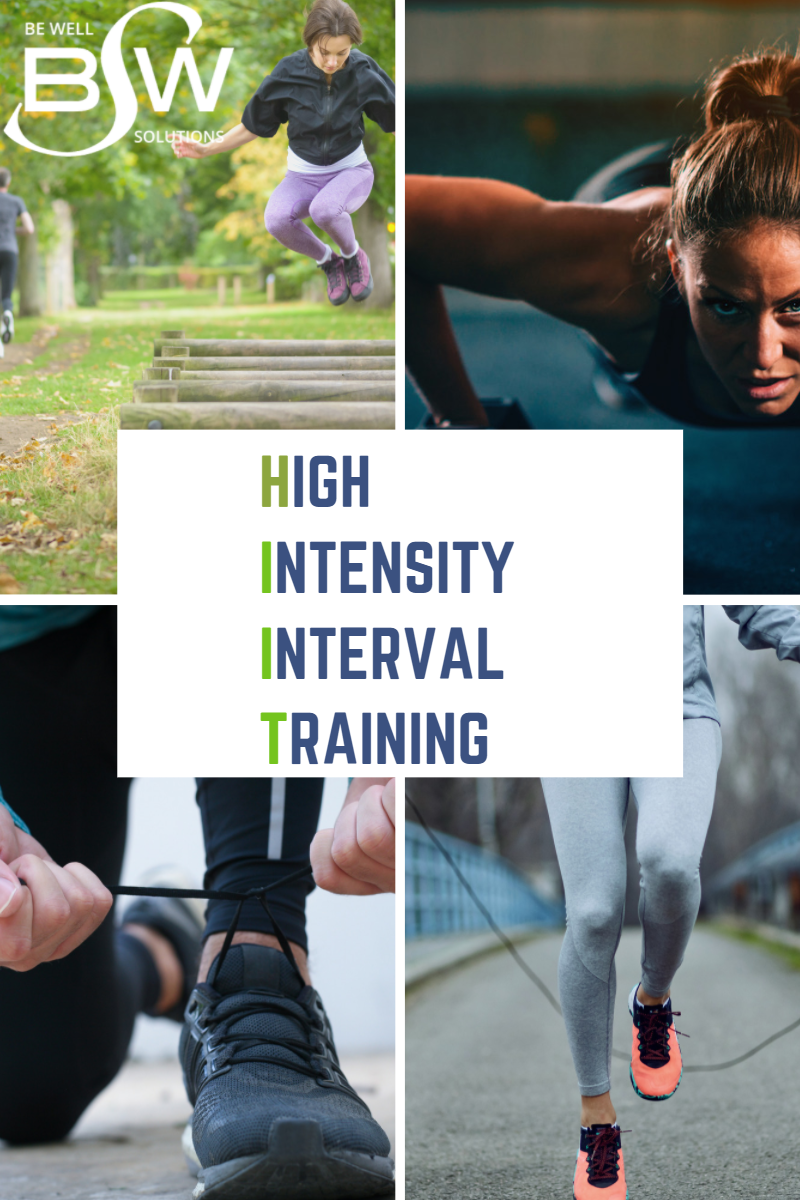
High-intensity interval training (HIIT) is a type of workout that alternates brief periods of vigorous exercise with periods of moderate activity, or rest (recovery). For example, a person could run for 30 seconds and then walk for three minutes. The periods of vigorous exercise and periods of rest/recovery can vary, as can the intensity levels of both. This allows HIIT workouts to be very adaptable to each individual and their fitness levels. The popularity of HIIT has remained on the rise thanks to continued research supporting it as an efficient and effective way to get and stay fit. HIIT is an excellent way for you to improve your fitness level and health, but it does require pushing your body to a higher intensity, so take your level of fitness into account before starting. Consulting a doctor before beginning any challenging exercise is a good idea, especially if you have not exercised for a long time, are seriously overweight, or have an ongoing medical condition.
What are the Benefits?
- As with all forms of exercise, HIIT can improve your blood pressure and cholesterol, aid in stress management, and reduce your overall risk of getting sick.
- According to the latest research from the Physical Activity Guidelines Advisory Committee (PAGAC), “HIIT by adults, especially those with overweight and obesity classification, can improve insulin sensitivity, blood pressure, and body composition, comparable with those resulting from moderate-intensity continuous training.”
- It may be done anywhere with little or no equipment!
- HIIT can be modified for people of all fitness levels by using the Rate of Perceived Exertion (RPE) scale to determine effort during periods of vigorous and moderate activity.
How Do I Get Started?
- Choose a cardio exercise of your liking! Options include biking, running, or swimming. At the gym, you can select a cardio machine that you enjoy.
- Be sure to include a warm-up, so your body is ready for vigorous exercise.
- Beginners should exercise as hard as possible (7-9 on the RPE Chart) for 20 seconds, then recover at a low to moderate pace for two minutes (3-6 on the RPE Chart). Over time, you’ll notice that the same level of activity will start to get a little easier, allowing you to gradually increase your intensity.
- Allow time for a cool-down so your body can recover after you are finished.
HIIT workouts are much more vigorous and tiring than moderate, steady-paced workouts. Due to this increase in intensity, it is necessary to allow more recovery time after your workout. Beginning with one HIIT session per week is a good place to start. As you gain strength and endurance, you can increase this to two or more sessions per week. However, even for avid exercisers, it is important to allow multiple recovery days or much lower intensity days between HIIT sessions. For more information on HIIT, check out this great tip sheet from the American College of Sports Medicine. Don’t forget, no matter what kind of exercise routine you choose to do, the most beneficial regimens will be those that you can consistently participate in for years to come.
Always consult with your physician before starting a new exercise program.
Continue reading July 2021 Newsletter: Solar Safety
Written by BWS Lead Health Coach- Kelly Schlather, BS, ASCM – CEP
